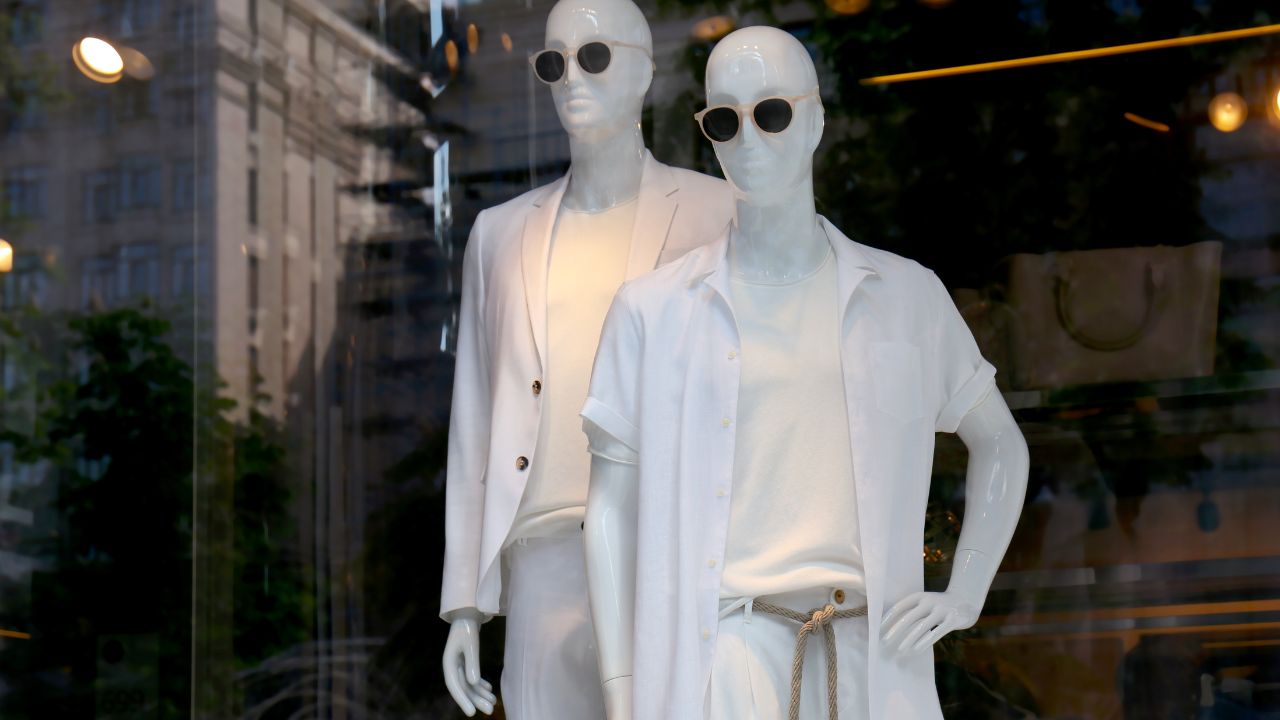Have you ever walked past a store and felt an instant urge to step inside? That magnetic pull often comes from powerful visual storytelling. In the fast-paced world of fashion, what customers see is just as important as what they buy. This is where visual merchandising in the fashion industry plays a key role. It’s the perfect blend of art and strategy that transforms displays into experiences, acting as a silent salesperson that draws attention, sparks curiosity, and turns window shoppers into loyal customers.
Effective visual merchandising in the fashion industry is about more than just making a store look pretty. It’s a strategic tool that directly impacts the bottom line. From the moment a potential customer glances at your window to the final purchase decision at the checkout counter, every visual detail contributes to the overall shopping experience. Understanding how to harness this power can transform a retail store from a simple point of sale into a destination, ultimately leading to a significant increase in sales.
The First Impression: Captivating Window Displays
The journey to increase sales often begins on the sidewalk. Your window displays are your first, and sometimes only, chance to grab a customer’s attention. A compelling window display tells a story, evokes an emotion, and makes a promise of what lies within. It’s the initial handshake between your brand and a potential buyer.
A powerful window display is more than a way to showcase products—it’s a story brought to life. In the world of visual merchandising in fashion industry, every element counts, from lighting and props to the way products are arranged. When done right, it stops people in their tracks and draws them in with curiosity. The goal is to design a display so captivating that shoppers feel compelled to step inside and explore more, turning casual foot traffic into loyal in-store visitors.
Guiding the Customer Journey Inside the Store
Once you’ve successfully encouraged someone to enter the store, the work of visual merchandising continues. The store layout and internal visual displays should create a seamless and intuitive path for shoppers to follow. This is where the science of customer behavior meets the art of design.
Effective fashion visual merchandising guides customers on a journey. This path should expose them to a wide range of products, highlight key collections, and lead them toward high-margin items. Consider these strategies:
- The Decompression Zone: The first few feet inside the door is a transition space. Avoid cluttering this area with crucial information or products, as shoppers are still adjusting to the new environment. Instead, use a powerful visual display or a signature mannequin to set the tone.
- Creating a Path: Most customers naturally turn right upon entering a store. Use this tendency to your advantage by designing a circular path that guides them through different sections. This ensures they see a significant portion of what your visual merchandising offers.
- Speed Bumps: Strategically place “speed bumps” like mannequins, promotional tables, or unique store display fixtures along this path. These elements break up long aisles, slow down the customer, and draw their attention to specific products or promotions.
The Psychology of Visually Appealing Displays
Why do certain displays make us want to buy? The psychology behind visual merchandising in the fashion industry is fascinating. It taps into our subconscious desires and influences our purchasing decisions in subtle yet powerful ways. A visually appealing presentation can make products seem more valuable and desirable.
Color plays a massive role. Warm colors like red and orange can create a sense of urgency and are great for sale sections, while cool colors like blue and green evoke feelings of calm and trust, often used in high-end fashion retail. Similarly, lighting can be used to spotlight hero products, create ambiance, and guide the eye.
The “Rule of Three” is another powerful psychological principle. Grouping products in threes is more visually appealing and memorable to the human brain than other arrangements. This simple technique can make a store display look more balanced and professional, encouraging customers to engage with the products.
How Fashion Visual Merchandising Strengthens Brand Management
Visual merchandising is a critical component of brand management. It’s the physical manifestation of your brand’s identity. Every choice, from the font on your signage to the materials used in your fixtures, communicates something about your brand. Consistency is key to building a strong brand image and fostering brand loyalty.
Imagine a luxury brand known for its minimalist aesthetic. Its retail store should reflect this with clean lines, a neutral color palette, and sparse, elegant displays. Now, picture a youthful, edgy streetwear brand. Its store might feature graffiti art, industrial fixtures, and vibrant, dynamic displays. When the in-store environment aligns perfectly with the brand’s identity, it creates a cohesive and immersive shopping experience that resonates with the target audience. This consistency builds trust and helps customers form a deeper connection with your brand.
Using Displays to Engage Customers and Tell a Story
Modern consumers crave experiences, not just transactions. Visual merchandising is your most effective tool for transforming a simple shopping trip into a memorable event. To truly engage customers, your displays must tell a story.
This is especially true for seasonal collections or new arrivals. Instead of just putting new clothes on a rack, create a narrative around them. For a fall collection, you might use autumnal props like leaves and warm lighting to evoke a sense of coziness. For a summer line, you could create a beach-themed display that transports the shopper to a tropical vacation. These stories make the products more relatable and desirable. They help the customer visualize themselves using the products, which is a powerful motivator to increase sales.
FAQ: What is the Most Important Element of Visual Merchandising?
While many components are vital, the most important element of visual merchandising is creating a focal point. A focal point is the first thing a customer’s eye is drawn to in any display, whether it’s a window display or an in-store setup. It should immediately capture customers’ attention and communicate the most important message, such as highlighting a new product, a key trend, or a special promotion. Without a clear focal point, a display can look cluttered and confusing, failing to guide the shopper’s eye and losing its impact.
The Direct Link Between Visuals and Sales
The connection between effective visual merchandising and boosting revenue is undeniable. Strategic displays do more than just attract customers; they actively work to increase the value of each transaction.
Here’s how visual displays directly contribute to a healthier bottom line:
- Increased Foot Traffic: Compelling window displays draw more people into the retail store, expanding the pool of potential buyers.
- Improved Product Discovery: A well-organized layout ensures customers see more of your merchandise, including items they may not have been looking for. This encourages impulse buys.
- Highlighting Promotions: Visual merchandising offers a clear and attractive way to communicate sales, special offers, and bundles, driving urgency and action.
- Cross-Selling Opportunities: By displaying complementary items together (e.g., a handbag and shoes with an outfit on a mannequin), you encourage customers to purchase complete looks rather than single items.
- Enhanced Perceived Value: A beautiful presentation makes products look more desirable and of higher quality, allowing for better price realization and protecting margins.
Across all retail industries, but especially in the fashion industry, investing in quality visual merchandising is not an expense; it is a direct investment in sales growth. It’s an ongoing process of testing, learning, and refining your approach to create the most effective shopping experience possible. By focusing on creating a visually appealing and brand-aligned environment, you can build brand loyalty, engage customers on a deeper level, and ultimately see a substantial return on your investment.
Ready to transform your retail space and drive real results? To master the art and science of connecting with your audience, explore the expert strategies at Marketing Immersion.






